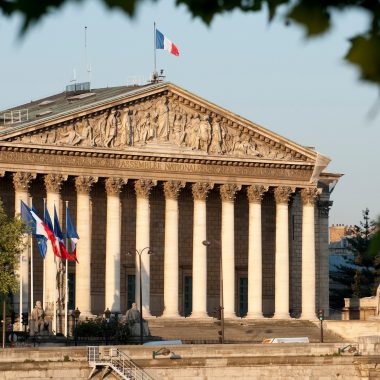With over a million mentions each, Paris and Crépol share the title of French capital of digital conversations this week. More than we might imagine, these conversations reflect the fluctuations of cities and their populations, which grow or shrink according to historical, economic and sociological circumstances. For example, Paris has never been as densely populated as it was in 1921, when the suburbs had not begun to stretch out endlessly, and Greater Paris did not even exist in its embryonic form. The phenomenon of the rural exodus had previously seen villages empty out; later, the phenomenon of medium-sized conurbations – whose businesses desert town centres – has the same effect, and the influence that may have once surrounded them generally fades with it. Until one day… An unexpected event brings them back into the limelight, flooding the web with their suddenly resurrected name… often by way of the news.
France before our eyes… and behind our screens
So all it takes is for a heinous crime to be committed in a rural commune for it to take on a lustre it has never known, dragging its conurbation and even its département with it. But with the explosion of online media and social networks over the last ten years, we’re simply witnessing a metastatic surge, as if the creature had escaped its creators (journalists and opinion leaders) to take over the public arena and become the law.
The latest witness to this mutation is the commune of Crépol in the Drôme. With nearly 2 million mentions in the digital sphere and 8 million engagements in just ten days, it would be well ahead of Marseille or Lyon in the rankings of French towns if the number of interactions reflected the number of inhabitants…

Number of mentions of Crépol in the digital sphere over the last month
Municipalities such as Saint-Jean-de-Luz, Cagnac-Les-Mines, Haut-Vernet and Dunkerque are recent examples, among many others, of the demographic explosion – on social networks at least, where conversations are now an extension of media debates – that can strike a place hitherto unknown to the general public or for entirely different reasons.
Jérôme Fourquet and Jean-Laurent Cassely, co-authors of the book-investigation on the metamorphoses of French territories, La France sous nos yeux (Fayard, 2021) have already reached the same conclusions. In an article published on the Slate website to complement the publication of their book, they map France and all its communes according to the degree of popularity, calculated on the basis of the number of hits on their respective Wikipedia pages.

Map drawn up by Jérôme Fourquet and Jean-Laurent Cassely for Slate, 10 October 2021
In their study, towns ‘centres of economic and cultural activity, which, for this very reason, feed a current of interest among the public’ share the spotlight with tourist areas which, while they don’t fill up all year round, ‘constitute the other major component of desirable France’.
Archives are forever
Online, the rules are therefore the same as elsewhere, with the volume of publications linked to a city not following a linear evolution. In the virtual world, more than anywhere else, the reputation of a town or village is uncorrelated with its size, and every week or so – speaking only of France – several intermediate towns dethrone Paris in terms of digital visibility.

Most frequently used keywords and hashtags related to France from 23 to 29 November 2023. Strasbourg, Grenoble and Avignon stand out on the one hand, while Crépol and Romans-sur-Isère take up almost all the space on the other.
It’s the same story in every corner of the globe. Cities that in reality have yet to gain the upper hand over others are outstripping them online, where they are demonstrating greater appeal and a dynamic that foreshadows the day when the curves will actually cross.
Dubai, for example, the promised land of influencers, has beaten the likes of Moscow, Mumbai and Sydney to the punch in terms of the number of publications over the past year.
What’s more, as controversies and trends unfold, data continues to accumulate, sometimes by the millions, on the account of a locality or conurbation, making a depopulated village look like a digital megalopolis. A hundred years from now, who will be able to witness the uninterrupted flow of #Crépol on the platforms, as if, for a moment, the whole world had revolved around a French village of some 500 souls. If she does not remain in the collective memory, the algorithms will tell her story and her massive digital footprint. They will not fade away, and will remain the unique witnesses of an era in which a new capital is born every day.
By Adrien Peltier










